
Knee pain is one of the most common symptoms for which patients turn to orthopedists and other specialists. Many people completely ignore the appearance of unpleasant sensations, as they are age-related and almost natural. But there are many prerequisites for pain in the knee joint, because it has a complex structure, it is influenced by several external and internal destructive factors. Some illnesses are serious and require immediate treatment.
Who is more likely to suffer a knee injury?
The knee is formed by several bones connected by muscles, ligaments, tendons. There are also 5 synovial bags - cavities surrounded by a membrane designed to protect the joint. Between the bone joints is an interarticular cartilage - the menisci, which helps the knee move freely. Violation of the work of even one part of the knee joint leads to the appearance of unpleasant symptoms.
Especially often pain in the knee joint appears in people with flat feet. This is a foot pathology, which violates the ability to absorb shocks of the limbs. With age, increased load on the joints leads to their destruction and the development of inflammation - pain syndrome appears. The same consequence has various types of deformities of the legs, lower legs.
There are several factors under the influence of pain in the knee appear more often:
- overweight;
- Passive lifestyle;
- High sports load;
- diabetes;
- Vascular disease;
- Age of senior citizens;
- Knee surgery and injuries;
- Work with increased load on the legs.
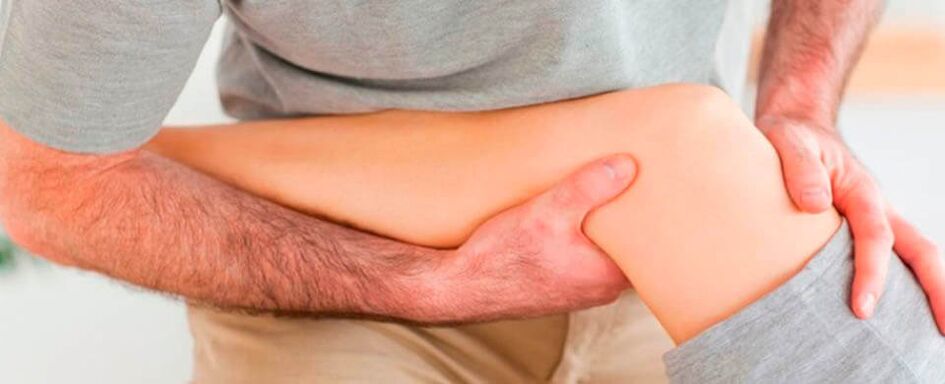
The cause and treatment of knee pain is very different, as is the severity of the sensation. If the knee is very sore, the cause may be an injury or an advanced stage of arthrosis, a severe inflammatory process. Sometimes the symptoms become permanent, even at rest, accompanied by swelling, redness of the skin, and dryness. All these signs should warn a person and force him to visit a doctor.
Pain due to bruises on the knee
Among the traumatic causes of joint dysfunction, bruising is the most common. Why does the knee hurt if the symptoms are preceded by only small bruises? Although a mild injury is accompanied by bleeding into the soft periarticular tissue, its swelling. As a result, nerve roots suffer, pain appears.
In more serious cases, the pain in the knee increases with flexion and extension of the leg, the person stops moving due to a sharp sensation in the joint. On palpation, swelling of the foot may be observed, it is hot to the touch. How to treat such injuries? You should contact a traumatologist, take an x-ray, follow all recommendations and ensure peace of mind for the feet.
Often, traumatic hemarthrosis is the cause of pain in the knee joint after a superficial bruise. This is the outpouring of blood into the joint cavity, causing edema, swelling of the synovial membranes. As a result, the joints are filled with blood, inflammation begins in them. Without proper treatment, injury can lead to the development of chronic arthrosis, even at a young age.
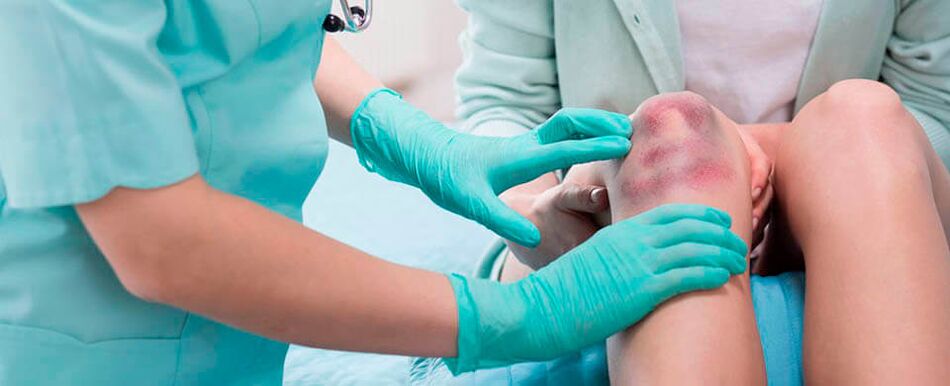
Other types of knee injuries
If the foot at the knee is sore, and trauma contributes to this sensation, the cause may lie in various damages to the joint components. Here are the main ones:
- Meniscopathy. It is a flattened or torn meniscus. Especially often injuries are observed in professional athletes, in people involved in extreme sports, as well as in domestic injuries. A person feels his knees severely sore, the nature of the piercing sensation, daggers, joints lose mobility for a while.
- Ligament damage. A tear (sprain) of the ligament occurs when the leg is twisted, after a jump, the limb is extended in an unnatural position. There is a sharp pain, the legs swell, the position of the joints changes, it becomes loose.
- Rupture of the cruciate ligament. Because these ligaments are located in the joint, often the injury leads to bleeding into the knee cavity. Only a puncture will help pump blood and make an accurate diagnosis.
Painful pain in the knee joint sometimes accompanies chronic dislocation of the patella. Without treatment of acute injury in some patients, the dislocation becomes chronic and gives frequent relapses. In children, this pathology causes X-shaped curvature of the foot and leads to serious violations of its function. Sometimes the pathology affects the knee on both feet.
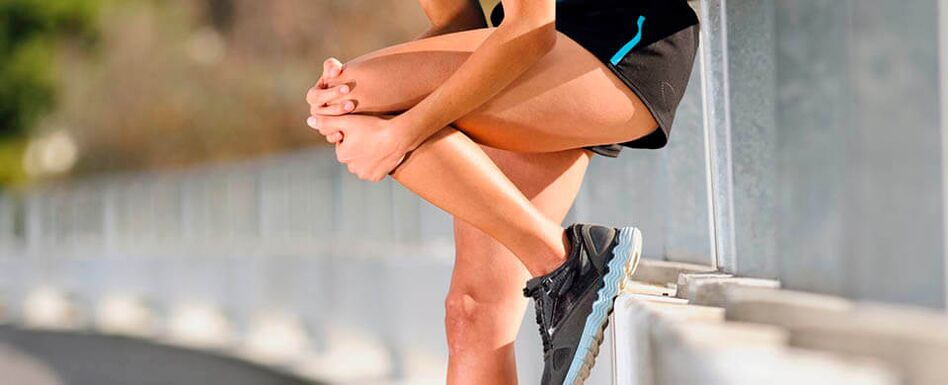
Inflammatory disease of the knee
Often standard treatments for knee pain are ineffective. In this case, not the joint itself, but the surrounding soft tissue may be affected. So, tendonitis, or inflammation of the tendons, can be triggered by increased pressure on the limbs, leg injuries in the past, allergies, drug reactions, etc. Painful knee joints with such diseases, as a rule, during the day or in the evening, at night the pain is reduced. In the acute stage, joint mobility is very limited, the syndrome persists, unable to receive therapy with ointments, creams. A sharp sensation was also observed on palpation of the lateral part of the knee.
If the knee hurts regularly, the symptoms worsen after hypothermia, the cause may be synovitis - inflammation of the synovial membrane. Inflammatory exudates appear in the joints, causing a feeling of rupture and pain. The causes of pathology are different:
- autoimmune diseases;
- Metabolic diseases;
- Injuries in the past;
- Arthrosis.
Another "popular" disease in which the knee hurts is bursitis. It occurs when the exchange (joint bag) becomes inflamed. In addition to the pain syndrome, there is redness, swelling, increased sensitivity of the patella zone. If you do not explain in a timely manner how to treat bursitis, it almost always becomes chronic.
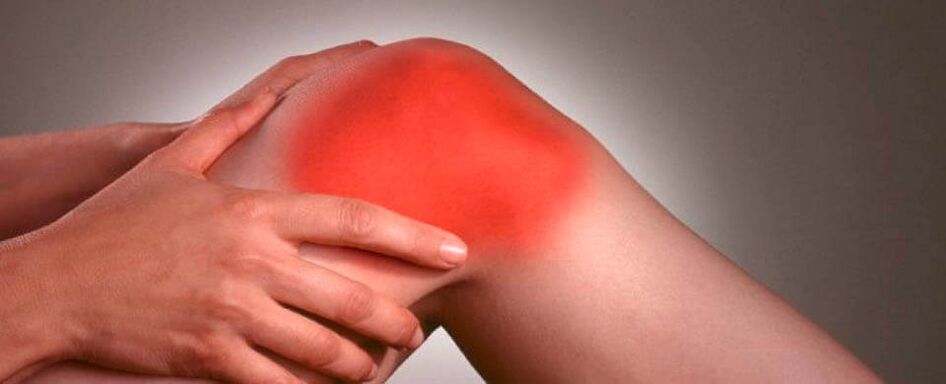
Neoplasm of the knee joint zone
Malignant tumors of this localization are rare, pain syndrome is typical for them only in the final stages. More often, aching pain in the knee joint is present in benign formations:
- Cyst Baker. This tumor occurs below the knee, on the surface of its back. In appearance, the skin above the cyst is normal, not inflamed; in the bent form, the swelling may not be at all. In the standing position, a clear, soft, elastic formation appears at the site of cyst localization. It appears after a unilateral knee injury, suffering from cartilage damage. Often, cysts accompany chronic synovitis, arthrosis, rheumatoid arthritis. Large cysts cause not only pain in the knee, but also serious limb mobility limitations. Due to the compression of blood vessels and nerves, other symptoms are cold skin, paleness, itching and numbness.
- Meniscus cyst. Appears in the external or internal meniscus, when a cavity with fluid is localized in the cartilage. The knee in this case hurts after a high load or towards the end of the day. Large cysts may be visible on the lateral side of the joint, while smaller ones are only visible on ultrasound or x-ray.
A rare pathology is Hoff’s disease - transformation of joint adipose tissue, which becomes fibrous and causes joint dysfunction. Against the background of this pathology, arthrosis often develops, which causes pain in the knee joint. Causes - hormonal disorders, menopause in women.
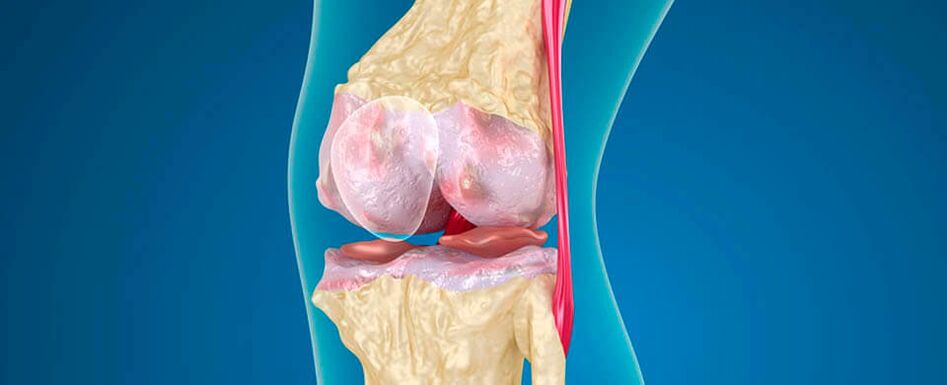
Infectious pathology of the joints
Against the background of infection, the knee joint hurts sharply, sharply, giving rest does not cause relief. Even urogenital and intestinal infections can complicate the musculoskeletal system, resulting in reactive arthritis. Bacteria (salmonella, chlamydia, gonococci and others) penetrate into the bone articulatory cavity with blood flow, settle on the tissues and cause inflammation. Tendons are usually inflamed as well, so the knee is swollen and hot to the touch.
Tuberculosis is a serious disease. Mycobacterium tuberculosis multiplies in bone tissue, causing bone thinning, cartilage necrosis and soft tissue. Without emergency treatment, the knee joint aches and collapses, and the process covers a much larger area. As a result, fistulas appear - cavities with pus, which can pour out and cause damage to the whole organism.
The acute and urgent disease is osteomyelitis of the bones. What to do if your knee hurts, and the process is accompanied by weakness, muscle aches, fever up to 40 degrees? If the pain in the knee is dull, ruptured, and the tissue itself is swollen, red, with blue, you should immediately call an ambulance and go for emergency surgery. Otherwise, you could lose a leg or die.
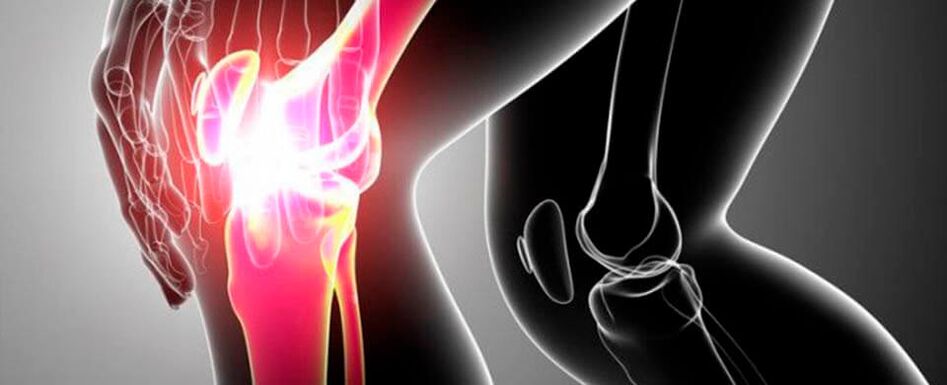
Knee pain - the cause of degenerative nature
After the age of 50, a large number of people experience knee pain. Prerequisites are aging of the body, wear and tear of the joints and the development of the most common pathology - osteoarthritis (gonarthrosis). It leads to thinning, destruction of cartilage with changes in the shape of the bone head. Often, in the early stages of pathology, the knee hurts on one side, after a few years the lesion becomes bilateral. In the morning, the stiffness of the legs was alarming, but it quickly passed. Increased sensation is possible after physical work, intensive sports, long walks.
At an advanced stage, the articular tissue collapses, osteophytes grow to the sides of the joint space. These are spikes made of bone tissue, which in severe cases rupture and cause unbearable pain. There are several degenerative pathologies, the symptoms of which will be similar to those of gonarthrosis:
- Osteochondropathy. It affects the articular surface of the bones, is associated with trauma, sports. Adolescents can thrive for no apparent reason.
- Joint pain. It occurs rheumatoid, psoriatic, gouty, provokes chronic inflammation and destruction of the joints.
- Chondromatosis. The etiology is unclear. The disease causes the appearance of knots on the synovial membrane, which limit knee movement and cause pain.
Women in menopause often experience knee pain due to osteoporosis - thinning of bones, increasing their fragility. The disease is accompanied by cramps in the legs, pain in the spine, periodic fractures.
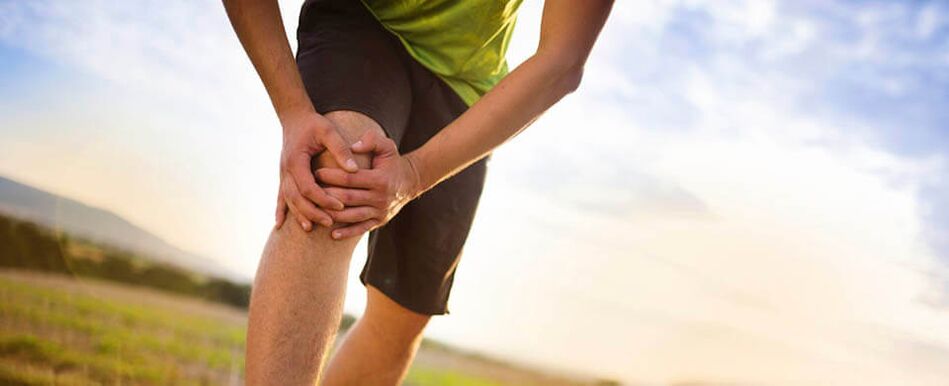
Other Prerequisites for Knee Pain
When the knee is sore, the etiology of the sensation can also lie in the defeat of the peripheral nervous system. So, sciatic nerve neuropathy against the background of damage to the lumbar vertebrae leads to several symptoms. A person’s knee is broken, the thigh area is sore, limb joints are weak, skin sensitivity is impaired. Foot reflexes also change.
Sometimes the entire knee joint hurts due to vascular disorders. Only in adolescence you do not have to worry - due to the rapid growth of the body, the vessels do not have time to supply the bones with blood. With age, the condition of the joints becomes normal - usually at the age of 18-20 years, the pain stops completely.
In old age, with the presence of atherosclerosis, the knee is also often sore, what to do in this case? Without normalizing fat metabolism, plaque will continue to accumulate in the arteries. The vessel becomes clogged, stopping feeding the joints completely. It develops arthrosis, the pain becomes chronic. Unpleasant sensations in the knee area can also be caused by varicose veins, thrombophlebitis, and vascular thrombosis.
How to make a diagnosis?
People's knees hurt quite often - how to treat the condition that arises can be determined only after examination. Both sharp and exciting pains in the knee are characteristic of pathological masses, some of them very dangerous. For diagnosis, you need to contact a surgeon, orthopedist, neurologist, rheumatologist, traumatologist. He or she will conduct a survey, find out the exact symptoms of the disease, determine the accompanying symptoms. Also, the doctor at the initial appointment will conduct a series of tests and physical examinations to clarify the nature of the problem.
What to do when your knee hurts, what instrumental methods will help identify the cause? Usually assigned:
- ultrasound;
- MRI;
- CT;
- Radiography.
The choice of the right technique must be left to the physician. So, ultrasound reflects well the changes in the foot with arthrosis, damage to the meniscus. Radiographs perfectly show bone defects, the presence of osteophytes. MRI and CT provide complete information, they are indispensable for complex diseases. In addition, the doctor will prescribe blood tests to rule out inflammation and rheumatism, if necessary, a joint biopsy will be made. With osteoporosis, densitometry is required - it will show the density of bone tissue in the patient.
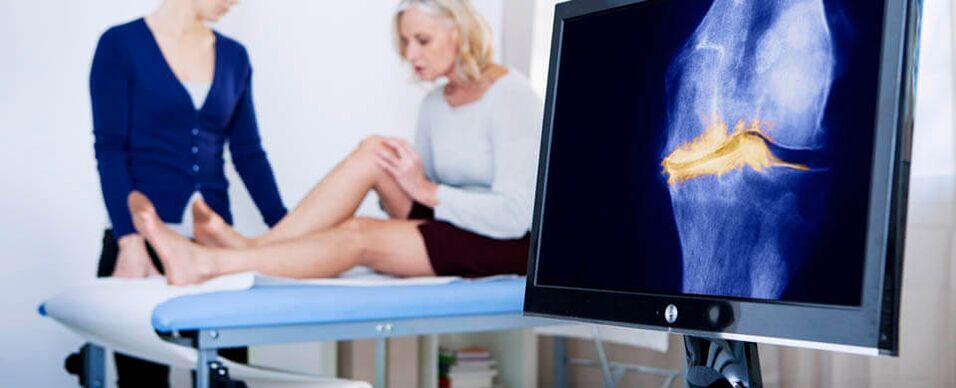
Treatment of knee pain
If the pathology is traumatic in nature, a traumatologist is involved in the treatment, sometimes it is carried out in a hospital. Mild bruises disappear on their own in a few days, for rapid absorption of the hematoma, it is advisable to use an ointment that can be absorbed into the knee. With pain, it is necessary to rub the ointment with non-steroidal anti-inflammatory components.
How to treat when a sore knee with its inflammatory lesions? In the acute stage of bursitis, synovitis, arthritis, the affected leg needs rest, ice compresses can be applied to him for 15 minutes for the first 3 days. Severe pain is relieved with injections of non-steroidal anti-inflammatory drugs, injections with anesthetics directly into the joints. To prevent chronic inflammation in the joints after the pain subsides, physiotherapy and exercise therapy are prescribed.
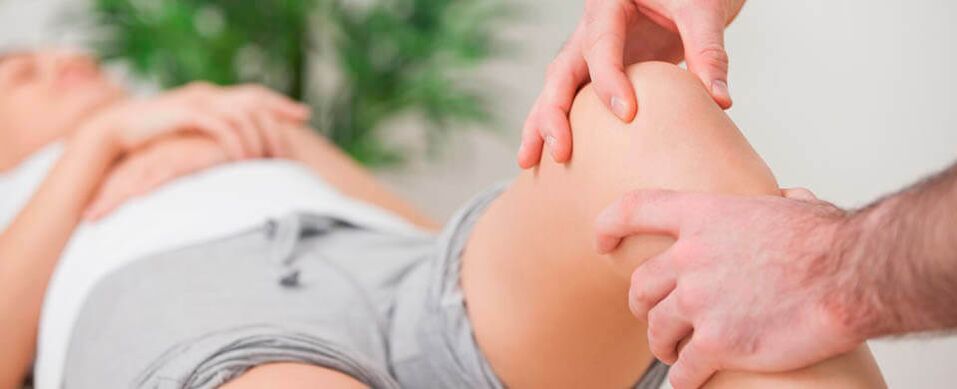
When a person suffers from knee pain due to gonarthrosis, what to do in this case? The main drugs for treatment are chondroprotectors and hyaluronic acid injections. These drugs are designed to restore the nutrition of the articular cartilage, as a result, it stops being damaged. Also for knee rehabilitation must be given:
- vascular medicine;
- Physiotherapy;
- Gymnastics;
- massage;
- Vitamin complex.
Infectious diseases of the joints are an indication for the introduction of antibiotics into the joint cavity or the administration of drugs orally. In some cases, it is necessary to perform surgery, removing the tissue affected by pus. Surgical intervention is also used to treat advanced forms of arthrosis with osteophyte growth. Sometimes just the replacement of a joint with a prosthesis allows a person to maintain the ability to walk normally.



































